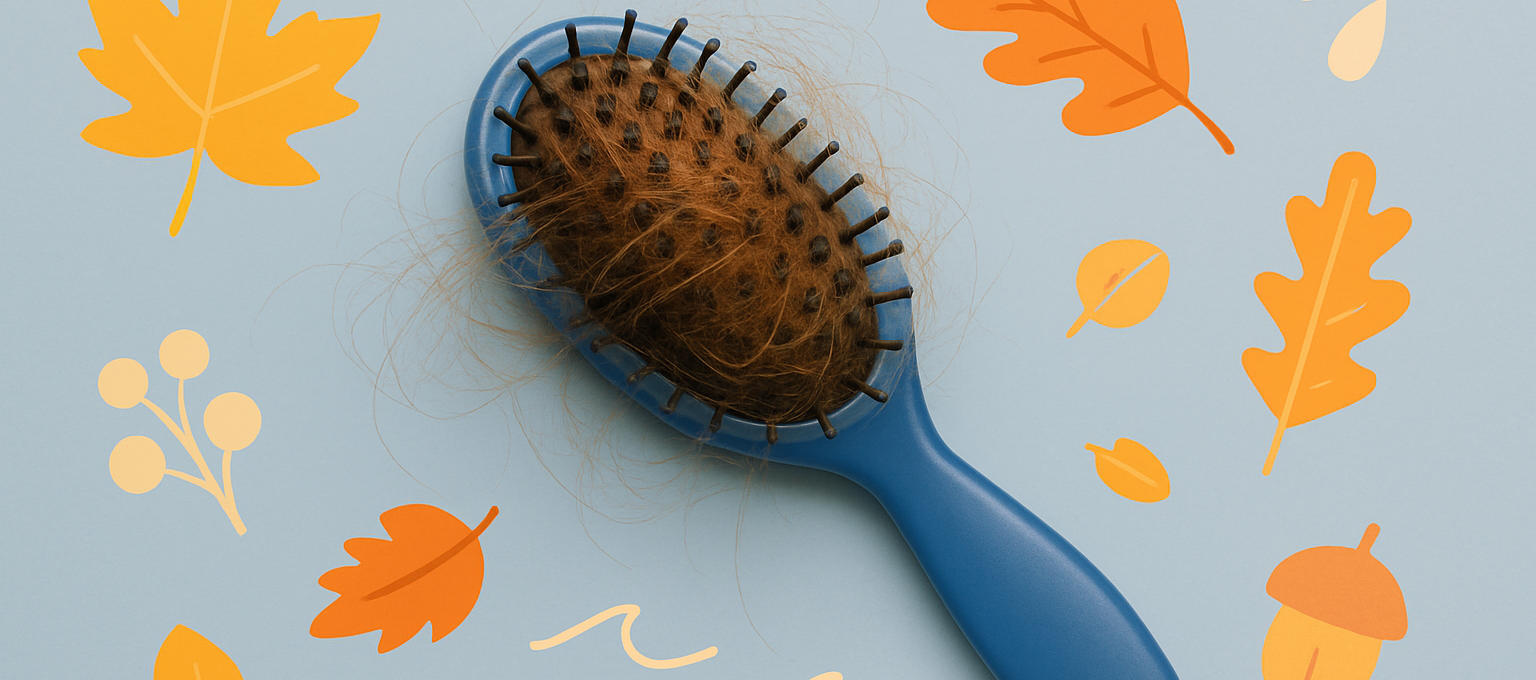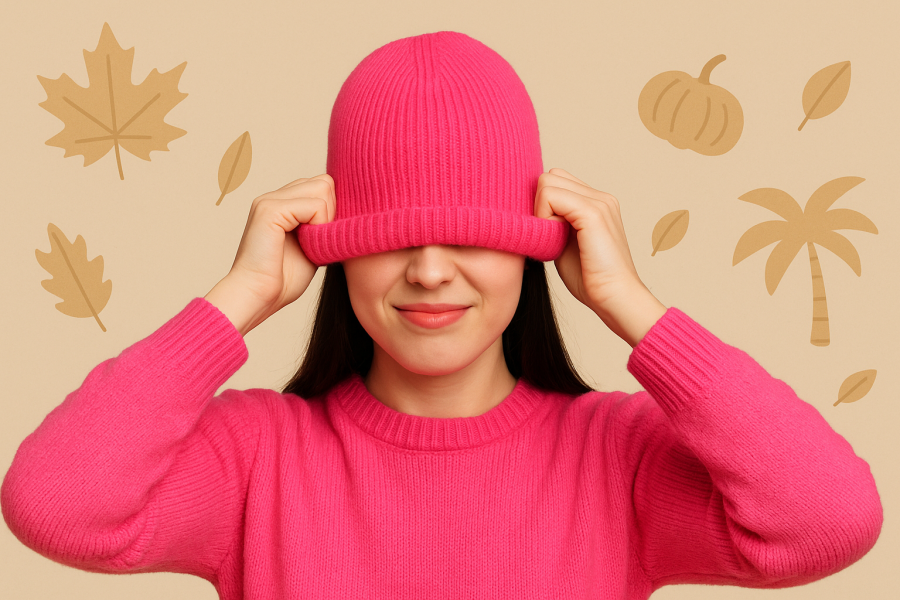Autumn is the season of hot chocolate, cozy blankets—and, unfortunately, more hair left behind on your brush. If you’ve noticed that more strands are falling out during washing or brushing, don’t panic. In most cases, this is a normal seasonal process with a biological explanation.
Why hair falls out more in autumn
1. The natural growth cycle
Hair grows in phases: anagen (growth), catagen (rest), and telogen (shedding). In summer, thanks to warmth and sunlight, more hairs remain in the growth phase. Come autumn, many shift at once into the shedding phase. It’s biology, not a disaster.
2. Summer’s after-effects
UV rays, heat, sweat, and saltwater all weaken hair follicles. By fall, those stressed follicles start releasing more strands—a delayed consequence of sunny holidays.
3. Less vitamin D
With shorter days and less sun, your vitamin D levels can drop. This vitamin plays a role in hair health. Important note: don’t start supplements without a blood test—too much vitamin D can be just as harmful as too little.
4. Hormonal and individual factors
For some, seasonal shedding is also linked to hormone fluctuations, diet, or stress.
How much shedding is normal?
Losing around 80–120 hairs per day in autumn is considered normal. Seasonal shedding typically lasts 6–8 weeks before stabilizing.
⚠️ If hair loss continues for more than three months, or if you notice bald spots, itching, or changes in hair texture, it’s time to see a trichologist.
How to support your hair during this time
1. Be gentle
Skip tight ponytails or braids, and don’t tug with your brush—hair is more fragile now.
2. Smart hair care
- Choose mild, sulfate-free shampoos.
- Conditioners and masks strengthen the lengths (they don’t affect growth, but reduce breakage).
- Treat your scalp to a gentle exfoliating scrub once a week to clear excess sebum and boost circulation.
3. Nourish from within
Fish, eggs, nuts, seeds, leafy greens—these provide protein, zinc, selenium, and B vitamins, all crucial for hair follicles.
4. Check your vitamin D
If you’re feeling unusually tired and notice heavy shedding, get your vitamin D levels tested. Only then, together with your doctor, decide whether supplements are needed.
5. Care for yourself
Stress has a direct impact on your hair. Sleep, fresh air, and relaxation are part of your “hair care routine” too.
Bottom line
Autumn hair shedding isn’t a crisis—it’s a natural renewal process. It usually lasts a few weeks and makes way for new, healthy growth. With gentle care, balanced nutrition, and the right nutrients, you’ll get through it smoothly. And if the shedding doesn’t stop or worsens, skip the “miracle lotions” and book an appointment with a trichologist instead.




Leave a Comment